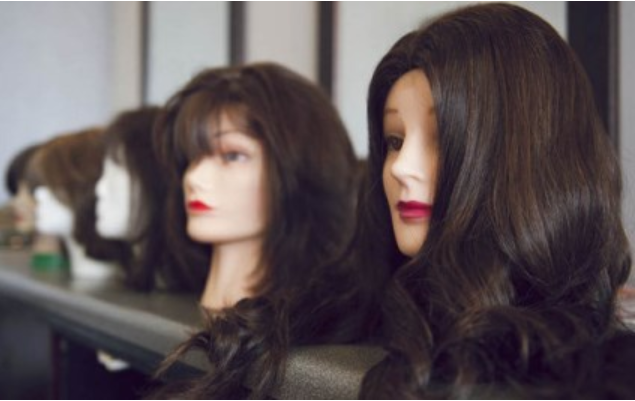
Featured Item

Sheitels: the hair raising cost of quality
What began as a niche product to fulfil the mitzvah of married Orthodox Jewish women is now a thriving industry. The modest sheitel has cast a big net of new business across the board – from specialised salons and stylists to those responsible for care, maintenance, and repair.
A new wave of professionalism has washed over this industry, offering women of all ages a variety of personalised services with customisable sheitels to suit their style, not to mention their bank balance. All in support of women who wish to continue the tradition without having to sacrifice their identity.
If you once bought your sheitel from the house on the corner out of the back room of some enterprising neighbour, you’ll be completely blown away by the growth and evolution of the sheitel business.
Chai Hecht (34) is a licensed cosmetologist who specialises in wigs, and since graduating from a top cosmetology school in New York City, she has been working in the industry for the past 15 years. “I have a huge passion for my line of work, which is essentially making women look and feel confident and beautiful.”
The sheitel has made a dramatic shift with the introduction of lace tops. Skin tops, also known as silk tops, were the only wigs available until about five years ago. With these wigs, the hair is injected through the fabric of the silk caps, creating a hidden knot. The silk cap matches the colour of your scalp and so looks like the hair is coming from your own head. However, sometimes those sheitels moved a little. With these wigs of the past, no matter how beautiful the hair quality, cut, colour, or style, the weight and fit was uncomfortable, heavy, clumsy, and often revealing that it was a wig.
The growing accessibility and affordability of lace tops – the new-age sheitel – in which virgin or untreated human hair is finely woven into a lace top, has been a complete game-changer. These are more lightweight, realistic looking, although a little more fragile.
“I love my new lace-top sheitel,” says a satisfied customer, “My hair falls and moves naturally, it’s light and comfortable, fits so well, and gives me an incredibly natural hairline and parting.”
According to Hecht, it’s a case of once you go lace, there’s no going back.
The latest range of sheitels are all imported from America or Israel, and clients are charged in dollars. Prices vary widely depending on brand, the quality of hair, if it’s processed or 100% virgin, and the length increases the price as does colour treatment. Blondes are harder to come by, so they are always more expensive. But the bottom line is that you’re in for anything from $1 500 (R26 877) to $4 000 (R71 671) a piece.
When it comes to staying on trend, wigs by their very nature are a different game and can’t always keep up with the latest in Hollywood hair. Says Hecht, “When a woman has just spent an untold fortune on her wig, she’s less likely to take too much risk or get too adventurous when it comes to cutting. But many women do still have fun, embracing creative looks when it comes to styling and colouring.”
Marilyn Medalie was one of the first to import sheitels to South Africa and has been in the industry for more than 40 years. Along with her experience and depth of knowledge, she is surrounded by a top team of professionals. The bulk of her clients are Orthodox Jewish women, but they include a broad range of women dealing with cancer, illness, alopecia, balding, and hair loss.
Faygie Sztern manages a wig repair and service team and makes her own brand of wigs. Patching or weaving human hair into delicate lace tops due to balding or hair loss – yes, wigs get it too – is a whole other sector of the business.
Conventional hairdressers can do damage to an expensive wig by not washing it correctly or using styling aids that are too hot, placing heat in the wrong places, and burning the hair.
Women who have made the investment know that the fragility of the lace sheitel means that it must be worn, looked after, and maintained with the utmost gentle care. All of them know they must bring it to the right place for the right people to wash, style, colour, and maintain it.
“It’s very different today from when I wore my first sheitel 28 years ago,” says a local rebbetzin from the Johannesburg community. “The sheitels that younger women are wearing literally look like the hair is growing out of their head. I think it’s a beautiful mitzvah and still important for Jewish women to present Yiddishkeit. They should look beautiful, and having beautiful hair means it has to start from the top.”




